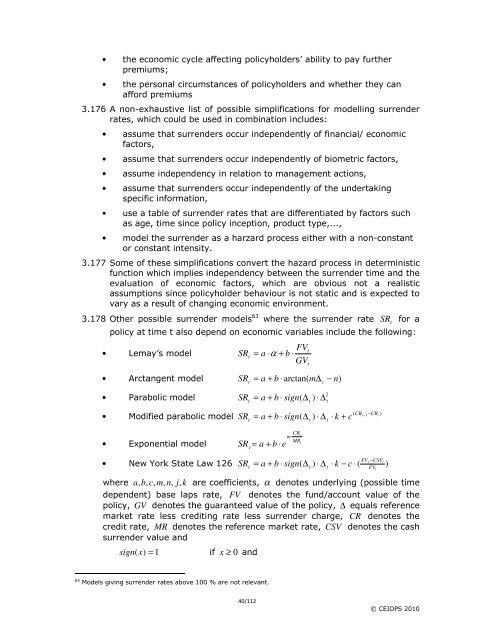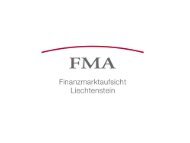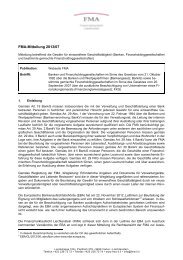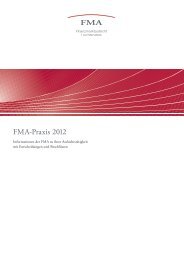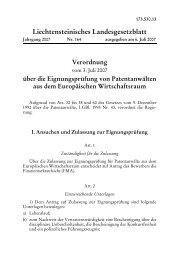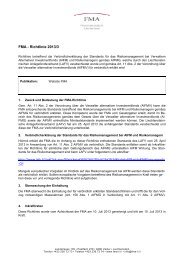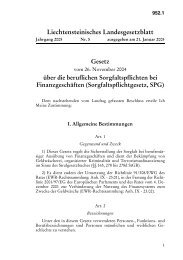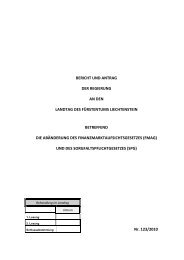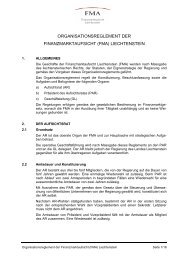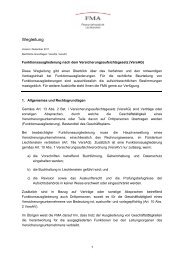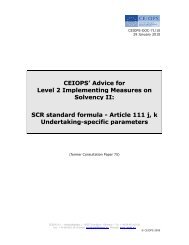CEIOPS' Advice for Level 2 Implementing ... - EIOPA - Europa
CEIOPS' Advice for Level 2 Implementing ... - EIOPA - Europa
CEIOPS' Advice for Level 2 Implementing ... - EIOPA - Europa
Create successful ePaper yourself
Turn your PDF publications into a flip-book with our unique Google optimized e-Paper software.
• the economic cycle affecting policyholders’ ability to pay further<br />
premiums;<br />
• the personal circumstances of policyholders and whether they can<br />
af<strong>for</strong>d premiums<br />
3.176 A non-exhaustive list of possible simplifications <strong>for</strong> modelling surrender<br />
rates, which could be used in combination includes:<br />
• assume that surrenders occur independently of financial/ economic<br />
factors,<br />
• assume that surrenders occur independently of biometric factors,<br />
• assume independency in relation to management actions,<br />
• assume that surrenders occur independently of the undertaking<br />
specific in<strong>for</strong>mation,<br />
• use a table of surrender rates that are differentiated by factors such<br />
as age, time since policy inception, product type,...,<br />
• model the surrender as a harzard process either with a non-constant<br />
or constant intensity.<br />
3.177 Some of these simplifications convert the hazard process in deterministic<br />
function which implies independency between the surrender time and the<br />
evaluation of economic factors, which are obvious not a realistic<br />
assumptions since policyholder behaviour is not static and is expected to<br />
vary as a result of changing economic environment.<br />
3.178 Other possible surrender models 63 where the surrender rate SR t <strong>for</strong> a<br />
policy at time t also depend on economic variables include the following:<br />
• Lemay’s model<br />
FVt<br />
SRt = a ⋅α<br />
+ b ⋅<br />
GV<br />
• Arctangent model = a + b ⋅ arctan( m∆<br />
− n)<br />
• Parabolic model<br />
• Modified parabolic model<br />
SRt t<br />
SR = a + b ⋅ sign ∆<br />
MRt<br />
• Exponential model SR = a + b ⋅ e<br />
SR<br />
t<br />
t<br />
t<br />
40/112<br />
t<br />
2<br />
( ∆ t ) ⋅ t<br />
= a + b ⋅ sign(<br />
∆ ) ⋅ ∆ ⋅ k + c<br />
CRt<br />
m⋅<br />
t<br />
t<br />
( CRt<br />
−1−CRt<br />
)<br />
FVt<br />
−CSVt<br />
• New York State Law 126 SR = a + b ⋅ sign(<br />
∆ ) ⋅ ∆ ⋅ k − c ⋅ ( )<br />
t<br />
where a , b,<br />
c,<br />
m,<br />
n,<br />
j,<br />
k are coefficients, α denotes underlying (possible time<br />
dependent) base laps rate, FV denotes the fund/account value of the<br />
policy, GV denotes the guaranteed value of the policy, ∆ equals reference<br />
market rate less crediting rate less surrender charge, CR denotes the<br />
credit rate, MR denotes the reference market rate, CSV denotes the cash<br />
surrender value and<br />
sign ( x)<br />
= 1<br />
if x ≥ 0 and<br />
63 Models giving surrender rates above 100 % are not relevant.<br />
t<br />
t<br />
FVt<br />
© CEIOPS 2010


